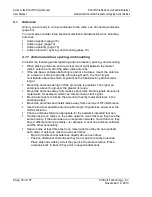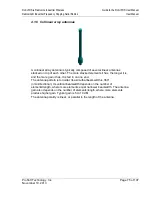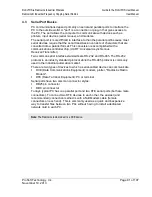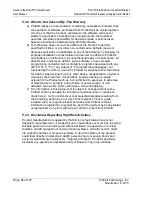
Guide to the RLX-IFHS User Manual
RLX-IFHS ♦ RadioLinx Industrial Wireless
User Manual
RadioLinx® Industrial Frequency Hopping Serial Radios
Page 74 of 107
ProSoft Technology, Inc.
November 19, 2013
4.1.4 Antenna Polarity
Antenna polarization refers to the direction in which the electromagnetic field
lines point as energy radiates away from the antenna. In general, the polarization
is elliptical. The simplest and most common form of this elliptical polarization is a
straight line, or linear polarization. Of the transmitted power that reaches the
receiving antenna, only the portion that has the same polarization as the
receiving antenna polarization is actually received. For example, if the
transmitting antenna polarization is pointed in the vertical direction (vertical
polarization, for short), and the receiving antenna also has vertical polarization,
the maximum amount of power possible will be received. On the other hand, if
the transmit antenna has vertical polarization and the receiving antenna has
horizontal polarization, no power should be received. If the two antennas have
linear polarizations oriented at 45° to each other, half of the possible maximum
power will be received.
4.1.5 Whip antennas
You can use a 1/2 wave straight whip or 1/2 wave articulating whip (2 dBi)
antenna with RLX-IFHS radios. These antennas are the most common type in
use today. Such antennas are approximately 5 inches long, and are likely to be
connected to a client radio (connected directly to the radio enclosure). These
antennas do not require a ground plane. Articulating antennas and non-
articulating antennas work in the same way. An articulating antenna bends at the
connection.
Summary of Contents for RadioLinx RLX-IFHS
Page 6: ......
















































